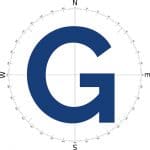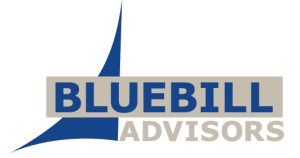Quasar Technologies unveiled the latest version of its web-enabled, services-oriented publishing production management platform, GETREADY 3.0. With this release, Quasar Technologies extends automated workflow processes for commercial publications and corporate documents. GETREADY Release 3.0 incorporates new features to extend its collaborative environment to external users (eg. freelancers, creative agencies, etc). All object types can be managed from anywhere and different user types associated to specific objects can be combined. GETREADY automatically changes the object status based on the user type. Authorized users can now upload their own assets into the system, bypassing the normal administrator-controlled input channels if required. GETREADY 3.0 offers Boolean logic and text-abbreviation enhancements to its search engine which already includes visual image search and multi-lingual phonetic search. Metadata and digital asset management now have Boolean logic search facilities. Users can also search for content based on workflow criteria, such as status, workflow date completions and date ranges and by user. GETREADY searches contents of: Word, Excel, txt, rtf, and xml files as well as articles and metadata. GETREADY 3.0 offers a new feature for extracting previously published content into new formats, and re-publishing it quickly. This new functionality enables content to be extracted from a variety of sources and automatically compiled into a prescribed format. All content is dragged and dropped into the layout with the ability to rearrange sections or chapters at any time.
Category: Content technology news (Page 236 of 640)
Curated information technology news for content technology, computing, and digital experience professionals. News items are edited to remove hype, unhelpful jargon, iffy statements, and quotes, to create a short summary — mostly limited to 200 words — of the important facts with a link back to a useful source for more information. News items are published using the date of the original source here and in our weekly email newsletter.
We focus on product news, but also include selected company news such as mergers and acquisitions and meaningful partnerships. All news items are edited by one of our analysts under the NewsShark byline. See our Editorial Policy.
Note that we also publish news on X/Twitter. Follow us @gilbane
SDL International announced the first interoperability versions of its Translation Memory products, SDL TRADOS 7.1 and SDLX 2005.1. These new releases come five months after the acquisition of TRADOS, Inc. Leading the list of interoperability features is support for SDLX’s native ITD Translation Format in SDL TRADOS 7.1. This allows for connectivity to and integration with SDL Translation Management System. SDLX 2005.1 users also get improved support for SDL TRADOS TTX files and both products have been enhanced to improve translation memory exchange using the TMX format. The interoperability releases also include new ways for creating, cleansing and maintaining translation memories and termbases. With the integration of SDL MultiTerm into SDLX 2005.1, all users can work from the same centralized termbase and SDLX 2005.1 users can search terms via fuzzy-matching. SDL TRADOS 7.1 users now benefit from automated terminology checks, which ensure correct terminology usage in source and translated material, and the ability to add comments against a TM segment. SDL TRADOS 7.1 also inherits new file support, including InDesign CS2, Quark Express for Mac, Java Properties and Generic Delimited Text files. SDLX 2005.1 users get new file filters that include SDL TRADOS Word filter, InDesign CS2 and support for .NET formats. Both SDL TRADOS 7.1 and SDLX 2005.1 are available free, for a limited time period, to any customer who purchased a license of SDL TRADOS 7 or SDLX 2005. http://www.sdl.com
PTC (Nasdaq: PMTC) announced that Arbortext Advanced Print Publisher 9.0 (formerly known as Advent 3B2) is now available. Arbortext Advanced Print Publisher is an automated publishing engine that produces professional, high-quality print and PDF documents with complex layout requirements. Arbortext Advanced Print Publisher has helped customers with technical documentation, financial reports, scientific/technical/medical (STM) journals, legislation and amendments, marketing brochures, telephone directories and product catalogs. Available in both server and desktop variants, Arbortext Advanced Print Publisher enables interactive touch-up of the automated result so that users retain control of the appearance of every page. Rapid, high-volume automation of the traditionally labor-intensive composition process is a key aim of the product. Arbortext Advanced Print Publisher 9.0 is now available. http://www.ptc.com
FUSA Capital Corporation (OTCBB:FSAC), provider of Internet-based video and audio search engine solutions for digital content providers, announced the most recent release of their SearchForMedia Video Portal Server application software and hosted services. SearchForMedia Video Portal Server is a software suite and service that provides customers with a turnkey media search engine and portal solution. Customers can deploy and manage the software solution in-house or use any or all of SearchForMedia’s design, content, advertising or hosted services. The SearchForMedia Video Portal Server and Services also provide customers with a content management system. The advertising system allows customers to monetize their content through traditional paid placements, feature zones and one-click buy programs. The latest release of SeachForMedia Video Portal Server is supported on Windows 2000, Windows NT and Linux.
Blast Radius announced the release of new XML authoring solutions for Documentum Webtop. These XMetaL products integrate seamlessly with Documentum version 5.2.5 and the 5.3 platform released by EMC Documentum earlier this year. With this release, Blast Radius introduces two new products, which extend XMetaL existing support of the Documentum Desktop Client: XMetaL Author Documentum Webtop Edition, a native XML authoring application that gives full-time content creators a solution tightly integrated with the Documentum repository through Documentum Webtop, and XMetaL Express for Documentum Webtop, an embeddable version of XMetaL, used from within the Documentum Webtop interface. This solution is an option for large enterprises that want to extend XML authoring capabilities to occasional authors such as subject matter experts. XMetaL support for Documentum Webtop is available immediately. Contact Blast Radius for pricing and additional information. http://www.xmetal.com
CambridgeDocs announced the 2.0 release and general availability of the xDoc Converter family of applications, including both the desktop and server versions of the product. The xDoc Converter family lets organizations increase the value of their existing content by transforming and repurposing the most popular document formats into XML, thereby enabling integration into database systems and leveraging of flexible XML publishing practices. The desktop version of the xDoc Converter gives end-users an interface for mapping documents into DITA, Docbook or any other XML format, while the server version enables powerful and precise XML publishing for repurposing existing content in J2EE server environments. Release 2.0 features include: More Powerful and Easier-to-Use Visual Mapping of Unstructured Content to XML; Integrated Document Views of Source Content for Visual Rule Creation; Input Rule Creation Wizards that Simplify the Conversion Process; XSD and DTD Import Functionality; DITA and DocBook Conversion Toolkits; Microsoft.doc to PDF publishing for any Java environment; Pure Java Microsoft Word Driver; Pure Java PDF Driver; New FrameMaker MIF Driver; and an Enhanced RTF Publishing Engine.
FatWire Software announced support for the Sun Solaris 10 operating system (OS). Both FatWire Content Server 6.3, also announced, and FatWire Spark pCM (portal content management) are available on the Solaris 10 OS. http://www.fatwire.com
Vignette Corp. (NASDAQ:VIGN) unveiled Vignette Collaboration release 7.0, the latest version of its enterprise collaboration product. Vignette Collaboration brings synchronous and asynchronous collaboration together in one interface, and includes packaged integration with the Instant Messaging server Microsoft Live Communications Server for enhanced synchronous communications. The product’s internationalization enables organizations to display, store, and search content authored in any Unicode supported language simultaneously, including Eastern European and Asian languages (e.g. Russian, Thai, Japanese, Korean, Simplified or Traditional Chinese and more). In addition, Hierarchical Group Support provides easier administration of access policies through better mappings to company directories; Search Engine Enhancements improve search engine integration and robustness; Administration Console Enhancements provide a simplified interface; Reduction of the number of clicks for common actions and provide in-place editing of documents, and more. Vignette Collaboration release 7.0 will be generally available in the fourth quarter of 2005. Licensing costs for Vignette Collaboration begin at $50,000. http://www.vignette.com

